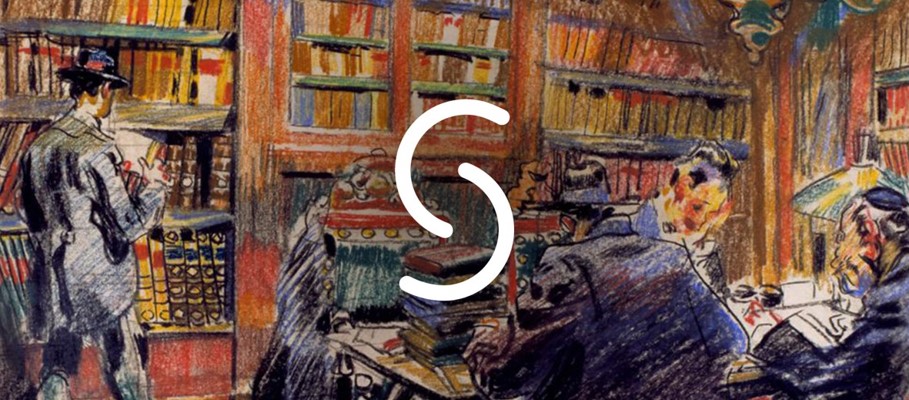-
Country
-
PT
-
Name of institution (English)
-
The National Archive of Torre do Tombo
-
Language of name of institution
-
por
-
Contact information: postal address
-
Alameda da Universidade, 1649-010 Lisbon
-
Contact information: phone number
-
00351 210 037 100
-
Contact information: email
-
mail@dglab.gov.pt
-
Reference number
-
PT/TT/TSO
-
Type of reference number
-
Archival reference number
-
Title (English)
-
Holy Office
-
Title (official language of the state)
-
Tribunal do Santo Ofício
-
Language of title
-
por
-
Creator / accumulator
-
Tribunal do Santo Ofício
-
Date(s)
-
1536/1821
-
Language(s)
-
heb
-
lat
-
por
-
spa
-
others
-
Extent
-
83,294 storage units
-
Type of material
-
Textual Material
-
Physical condition
-
Satisfactory
-
Scope and content
-
The Tribunal do Santo Ofício fonds comprises documentation produced by the Portuguese Inquisition, including the archives of the Conselho Geral (General Council) and the courts of Lisbon (including documents from the Inquisition of Goa), Coimbra, Évora, Porto and Lamego, which are described in separate (see links below).
In addition to the documentation gathered in these subfonds, the Tribunal do Santo Ofício fonds also includes separate bundles containing miscellaneous records, described individually. Digital copies of some of these records are available online.
-
Conselho Geral do Santo Ofício
-
Inquisição de Coimbra
-
Inquisição de Évora
-
Inquisição de Lamego
-
Inquisição de Lisboa
-
Inquisição do Porto
-
Archival history
-
After the extinction of the Inquisition in Portugal (1821), the archives of the Conselho Geral (General Council) and the Inquisition courts were deposited in the section of manuscripts of the Biblioteca Pública de Lisboa (Public Library of Lisbon), where they remained until 1823. In the following year, the Desembargo do Paço (Royal High Court) requested the vacancy of the censorship warehouse located in the Biblioteca Pública de Lisboa to reinstall the Censorship. King Pedro IV ordered the minister Marquis of Palmela to send the Desembargo do Paço’s consultation on the Censorship warehouse to the Viscount of Santarém, the chief guard of the Royal Archive of Torre do Tombo. Following the opinion of the Viscount, the Marquis of Palmela notified that the documents of the Conselho Geral and the Inquisition courts should be stored in the Torre do Tombo and its facilities expanded. The archives of the Conselho Geral and the Inquisition of Lisbon were incorporated into the Torre do Tombo in 1825. The Inquisitions of Coimbra and Évora archives were only transferred in the following year.
-
Administrative / Biographical history
-
The Holy Office Tribunal was officially established by the papal bull Cum ad nihil magis on May 23, 1536. Then, the royal court was settled in Évora. When the king moved to Lisbon in 1537, the Holy Office Tribunal followed him. The Inquisition of Lisbon was the only Inquisition court until 1541. Then, the courts of Coimbra, Évora, Porto, Lamego and Tomar were created. The latter three courts had short lives and were extinct in 1547 after the general pardon given by Pope Paul III to the New Christians and the following reorganisation of the Holy Office Tribunal.
The different territories of continental Portugal were under the authority of the courts of Lisbon (Central region), Coimbra (Northern region) and Évora (Southern region).
The first Regiment of the Inquisition was only published in 1552. These by-laws were reviewed and collected in new regiments in 1613, 1640 and 1774. During the reign of King José, the Holy Office Tribunal became a royal court. It had already lost its primary target — the New Christians or conversos — after the decree that abolished the distinction between New and Old Christians in 1773. In addition, the censorship authority was transferred from the Holy Office to another secular tribunal, the Mesa da Consciência e Ordens. The Inquisition entered decadence, and following the Liberal Revolution, the Cortes Gerais Constituintes (Parliament) extinguished the Holy Office Tribunal in 1821.
-
System of arrangement
-
The fonds is divided into eight subfonds (Inquisição de Goa and Inquisição de Tomar have no documents; their records were incorporated into other fonds/collections) and separate bundles.
-
Author of the description
-
Carla Vieira, 2023
